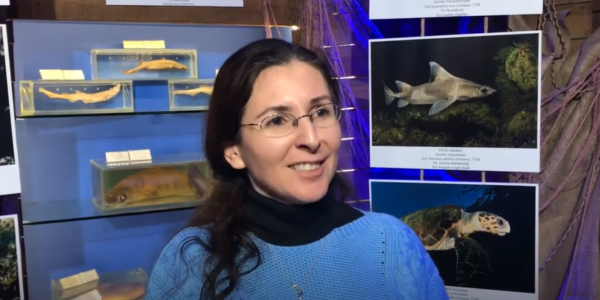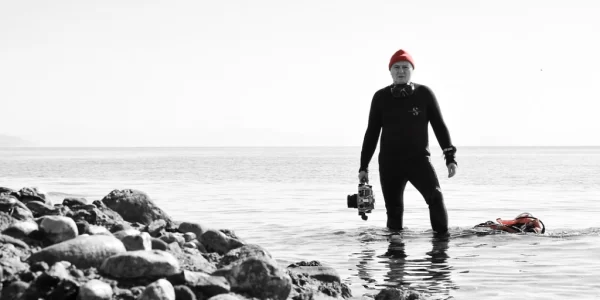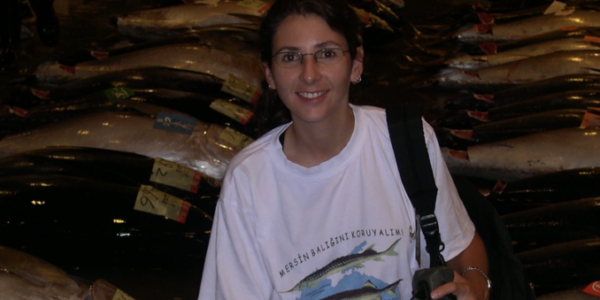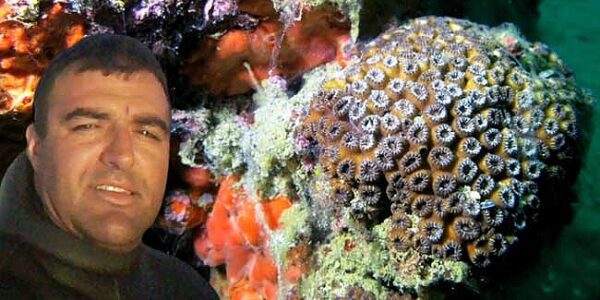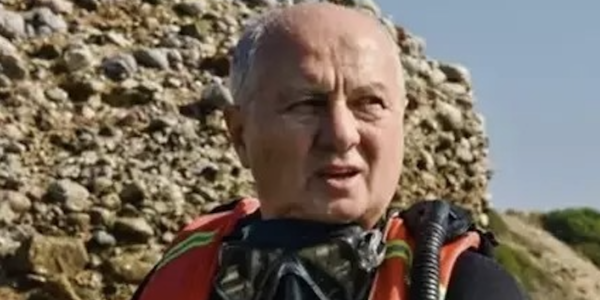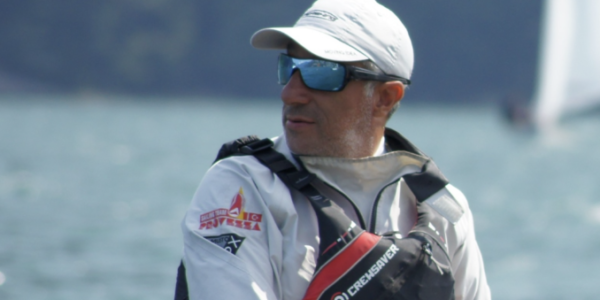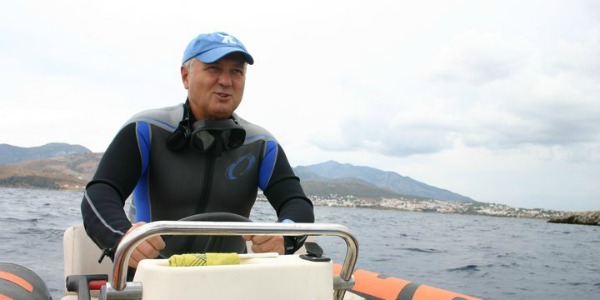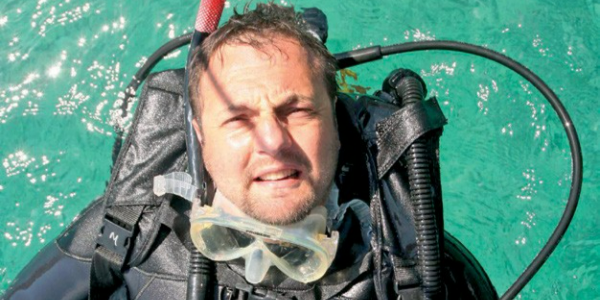
Scientists in Australia have witnessed whale shark mating behaviour at Ningaloo Reef, in what is believed to be the first documented recording of ‘pre-copulatory’ biting.
In a video posted on YouTube (see below) by lead researcher Christine Barry of the Centre for Sustainable Aquatic Ecosystems at Murdoch University in Western Australia, a mature male whale shark is seen following a smaller female before lunging forward and biting her tail fin.
The female shark, seemingly uninterested in his advances, pivots around the male before swimming into the depths. The male is seen following her before the researchers lose sight of the two sharks.
Very little is known about the mating behaviour of whale sharks (Rhincodon typus) which has, to date, only been observed in the wild in two places in the world – at Ningaloo Reef and the South Atlantic island of St Helena, where adult male and female whale sharks gather in almost equal numbers between December and March each year.
In 2005 and 2007 fishermen from St Helena reported incidents in which whale sharks ‘came belly to belly’ near the water’s surface – presumably in the act of mating.
Although there is no photographic record of the two encounters, in 2019 a male whale shark was photographed behaving similarly to the new Ningaloo video, following the female and positioning his snout against her tail fin in what is thought to be ‘pre-copulatory’ behaviour.

The only other documented encounter occurred at Ningaloo Reef in 2019, when a large whale shark – thought to be a male -was seen inverting itself and moving underneath a smaller animal – thought to be a female – before the smaller shark thrashes its tail in an apparent attempt to rebuff the larger shark’s advances.
While the 2019 Ningaloo encounter is assumed to have been an attempted mating event, it remains unconfirmed as the incident was spotted from the air and the sex of the sharks therefore not definitively confirmed.
Although whale shark mating encounters are very rare, similar behaviours observed in a number of other shark species including hammerheads, oceanic white tips, basking sharks and zebra sharks – the closest living relative to whale sharks – lends weight to the idea that the following and biting behaviour is an act of whale shark courtship.
Whale sharks regularly aggregate in several different places around the world, including the Philippines, in the Red Sea near Djibouti, the Galápagos Islands, Gladden Spit in Belize and Isla Mujeres in Mexico.

With the exception of the Galápagos aggregation, which is almost exclusively mature females, the others are overwhelmingly populated by immature males.
At Ningaloo Reef, of the 1047 individual whale sharks identified between 2014-2024, just 1 in 3 were female, almost all of which were sized at between 6-7m in length, far smaller than the 10-12m at which female whale sharks are thought to reach sexual maturity.
The new study suggests that this ratio may be the result of immature female whale sharks avoiding the ‘energetic costs of unwanted attention from males’, preferring instead to remain further offshore and undisturbed.
‘At Ningaloo Reef, the behaviours we observed and those reported by [during the 2019 sighting] did not appear to result in successful mating,’ write the authors. ‘Although it was possible that mating could have occurred after the sharks that we followed descended to deep water, the female appeared to actively resist the attention of the male.’
The encounter has undoubtedly shed new light on the mysteries of whale shark mating, but determining whether or not avoidance of sexual advances is the underlying reason for the male bias in whale shark aggregations will take further study, which the report’s authors say will ‘require observations of foraging of both male and female sharks in offshore habitats, a task that remains a major logistical challenge.’
‘Love bites? Pre-copulatory behaviours of whale sharks (Rhincodon typus) at Ningaloo Reef, Western Australia’ by Christine Barry et al is published under an Open Access license in Frontiers in Marine Science.
The post Whale shark mating behaviour recorded at Ningaloo Reef appeared first on DIVE Magazine.





